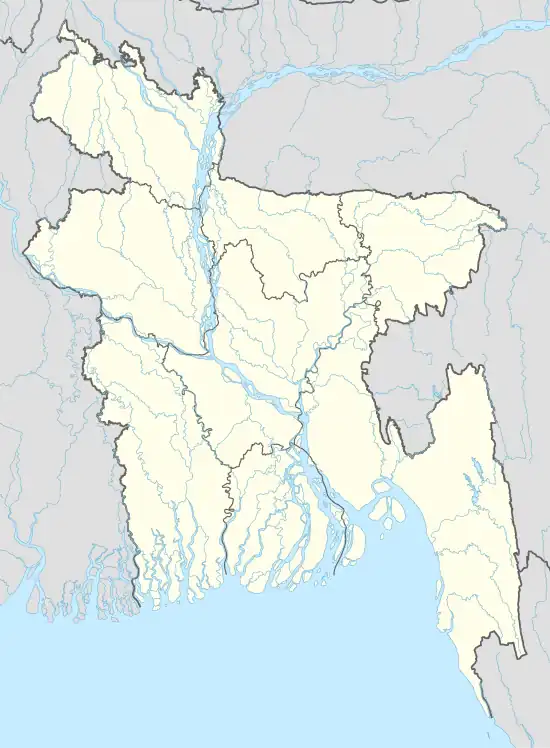Saghata Upazila
Saghata (Bengali: সাঘাটা) is an upazila of Gaibandha District in the Division of Rangpur, Bangladesh.[1] Village=shimultair Post=Bonarpara
Saghata
সাঘাটা | |
|---|---|
 Saghata Location in Bangladesh | |
| Coordinates: 25°6.3′N 89°35.2′E | |
| Country | |
| Division | Rangpur Division |
| District | Gaibandha District |
| Area | |
| • Total | 225.67 km2 (87.13 sq mi) |
| Population (1991) | |
| • Total | 232,118 |
| • Density | 1,000/km2 (2,700/sq mi) |
| Time zone | UTC+6 (BST) |
| Website | Official Map of Sughatta |
Geography
Saghata is located at Rangpur division 25.1056°N 89.5861°E. It has 43474 households and total area 225.67 km2.
Demographics
As of the 1991 Bangladesh census, Shaghata has a population of 232118. Males constitute 50.73% of the population, and females 49.27%. This Upazila's eighteen up population is 105508. Sughatta has an average literacy rate of 22.1% (7+ years), and the national average of 32.4% literate.[2]
Language
Most people of Saghata speak Bengali dialect of Rangpur region with some similar accents of Bogra region. Many people of Char region, specially of the far eastern char areas, speak the dialect of Mymensingh.
Administration
Saghata Upazila is divided into ten union parishads: Bonarpara, Ghuridah, Holdia, Jumarbari, Kachua, Kamalerpara, Muktinagar, Padumsahar, Saghata, and Varotkhali. The union parishads are subdivided into 117 mauzas and 130 villages.[3]
Notaable residents
- Ahmed Hossain(Ex. Minister of Undivided Bengal).
- Advocate Fazle Rabbi Miah(Deputy speaker).
- Dr. Mizanur Rahman (Ex. Chairman of Human rights Commission).
- Mahmud Hasan Ripon(Ex. President of Bangladesh Chattra League).
- Shishir Kumar Shaha (Announcer, Bangladesh Betar)
References
- Md. Hamidul Haque Chandan (2012), "Saghatta Upazila", in Sirajul Islam and Ahmed A. Jamal (ed.), Banglapedia: National Encyclopedia of Bangladesh (Second ed.), Asiatic Society of Bangladesh
- "Population Census Wing, BBS". Archived from the original on 2005-03-27. Retrieved November 10, 2006.
- "District Statistics 2011: Gaibandha" (PDF). Bangladesh Bureau of Statistics. Archived from the original (PDF) on 13 November 2014. Retrieved 14 July 2014.
